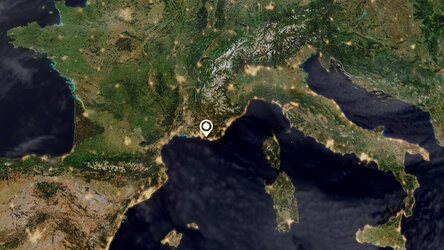Accept all cookies Accept only essential cookies See our Cookie Notice

About ESA
The European Space Agency (ESA) is Europe’s gateway to space. Its mission is to shape the development of Europe’s space capability and ensure that investment in space continues to deliver benefits to the citizens of Europe and the world.
Highlights
ESA - United space in Europe
This is ESA ESA facts Member States & Cooperating States Funding Director General Top management For Member State Delegations European vision European Space Policy ESA & EU Space Councils Responsibility & Sustainability Annual Report Calendar of meetings Corporate newsEstablishments & sites
ESA Headquarters ESA ESTEC ESA ESOC ESA ESRIN ESA EAC ESA ESAC Europe's Spaceport ESA ESEC ESA ECSAT Brussels Office Washington OfficeWorking with ESA
Business with ESA ESA Commercialisation Gateway Law at ESA Careers Cyber resilience at ESA IT at ESA Newsroom Partnerships Merchandising Licence Education Open Space Innovation Platform Integrity and Reporting Administrative Tribunal Health and SafetyMore about ESA
History ESA Historical Archives Exhibitions Publications Art & Culture ESA Merchandise Kids Diversity ESA Brand Centre ESA ChampionsSpace in Member States
Find out more about space activities in our 23 Member States, and understand how ESA works together with their national agencies, institutions and organisations.
Science & Exploration
Exploring our Solar System and unlocking the secrets of the Universe
Go to topicAstronauts
Missions
Juice Euclid Webb Solar Orbiter BepiColombo Gaia ExoMars Cheops Exoplanet missions More missionsActivities
International Space Station Orion service module Gateway Concordia Caves & Pangaea BenefitsLatest
Space Safety
Protecting life and infrastructure on Earth and in orbit
Go to topicAsteroids
Asteroids and Planetary Defence Asteroid danger explained Flyeye telescope: asteroid detection Hera mission: asteroid deflection Near-Earth Object Coordination CentreSpace junk
About space debris Space debris by the numbers Space Environment Report In space refuelling, refurbishing and removingSafety from space
Clean Space ecodesign Zero Debris Technologies Space for Earth Supporting Sustainable DevelopmentLatest
Applications
Using space to benefit citizens and meet future challenges on Earth
Go to topicObserving the Earth
Observing the Earth Future EO Copernicus Meteorology Space for our climate Satellite missionsCommercialisation
ESA Commercialisation Gateway Open Space Innovation Platform Business Incubation ESA Space SolutionsEnabling & Support
Making space accessible and developing the technologies for the future
Go to topicBuilding missions
Space Engineering and Technology Test centre Laboratories Concurrent Design Facility Preparing for the future Shaping the Future Discovery and Preparation Advanced Concepts TeamSpace transportation
Space Transportation Ariane Vega Space Rider Future space transportation Boost! Europe's Spaceport Launches from Europe's Spaceport from 2012Latest
Bouches-du-Rhône, France
Thank you for liking
You have already liked this page, you can only like it once!
The port town of Fos-Sur-Mer, in the southern part of Bouches-du-Rhône, France, is featured in this image captured by Copernicus Sentinel-2. It is from here where the first Meteosat Third Generation Imager satellite set sail last week on its journey to Europe’s Spaceport in French Guiana.
Zoom in to see this image at its full 10 m resolution or click on the circles to learn more about the features in it.
Bouches-du-Rhône is the third most populated department in France. With its wild and varied landscape, it borders Vaucluse to the north, Gard to the west and Var to the east (with the Mediterranean Sea visible to the south).
Marseille, the second most populous city in France, has one of the largest container ports in the country. Facing Marseille, the Frioul archipelago is made of four islands: Pomègue, Ratonneau, Tiboulen, and If. In the lower centre of the image lies the Étang de Berre, a brackish water lagoon around 25 km northwest of Marseille.
Fos-sur-Mer lies on the Golfe de Fos, an inlet of the Mediterranean’s Gulf of Lion, around 50 km from Marseille. Originally a small fishing village, the port town was transformed in the 1960s with the expansion of Marseille’s port and the construction of a major industrial area. It has since become the centre of Marseille’s traffic and container shipments.
It is from here where the Meteosat Third Generation Imager-1 (MTG-I1) satellite set sail on its 12 day voyage to Europe’s Spaceport in Kourou.
MTG-I1 is the first imaging satellite in the Meteosat Third Generation programme which will improve weather forecasting in both Europe and Africa. Designed as a follow-up to the Meteosat Second Generation series, the MTG programme will ensure the continuity of high-resolution weather monitoring beyond 2040.
It will comprise six satellites: four MTG-I and two sounding satellites, MTG-S.
MTG-I’s Lightning Imager will provide a new capability for European meteorological satellites, ensuring the continuous monitoring of more than 80% of the Earth disc for detecting lightning discharges taking place either between clouds or from cloud and ground.
Once the four-tonne satellite safely arrives in Kourou, final preparations for lift off will take approximately seven weeks. It is scheduled to be launched in December onboard an Ariane 5 rocket.
Follow more updates on the first Meteosat Third Generation satellite by following our Earth Observation Launch Campaign blog or on the MTG-I1 Pre-Launch Diary.
This image is also featured on the Earth from Space video programme.
-
CREDIT
contains modified Copernicus Sentinel data (2022), processed by ESA -
LICENCE
CC BY-SA 3.0 IGO or ESA Standard Licence
(content can be used under either licence)

Earth from Space: Bouches-du-Rhône

France – MERIS – 24 March 2002

Proba image of Marseilles

Colourful Camargue















 Germany
Germany
 Austria
Austria
 Belgium
Belgium
 Denmark
Denmark
 Spain
Spain
 Estonia
Estonia
 Finland
Finland
 France
France
 Greece
Greece
 Hungary
Hungary
 Ireland
Ireland
 Italy
Italy
 Luxembourg
Luxembourg
 Norway
Norway
 The Netherlands
The Netherlands
 Poland
Poland
 Portugal
Portugal
 Czechia
Czechia
 Romania
Romania
 United Kingdom
United Kingdom
 Slovenia
Slovenia
 Sweden
Sweden
 Switzerland
Switzerland

























